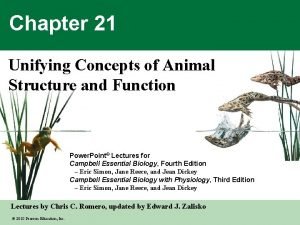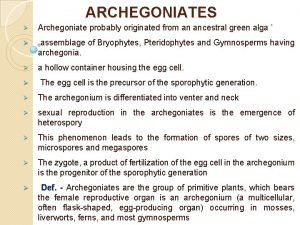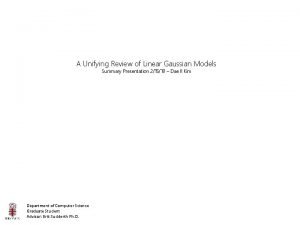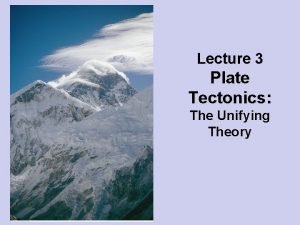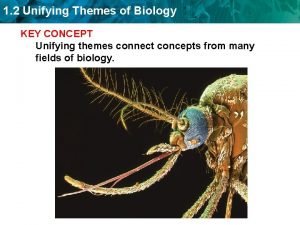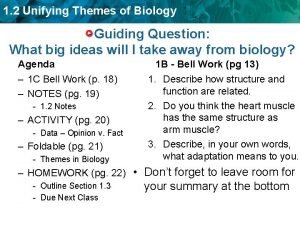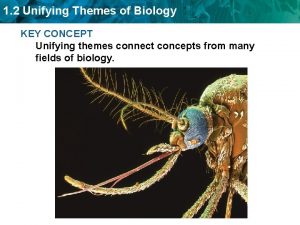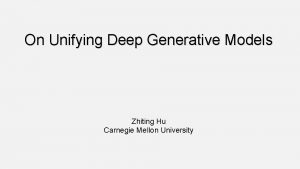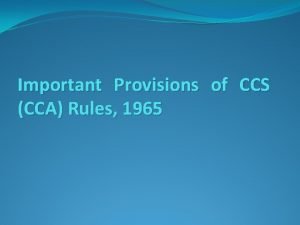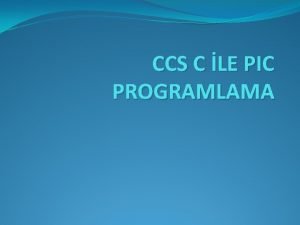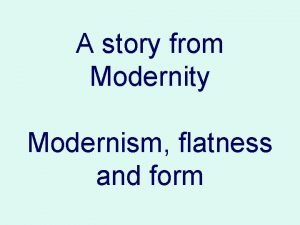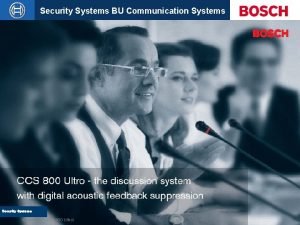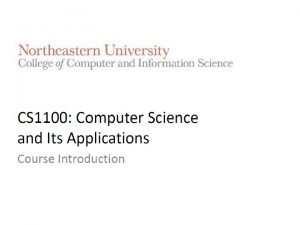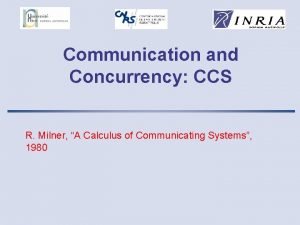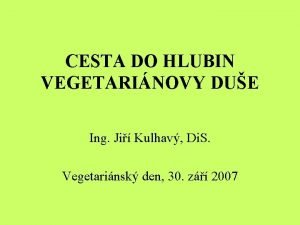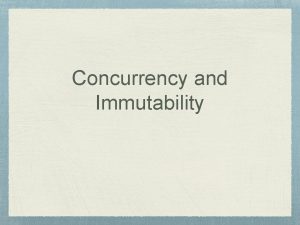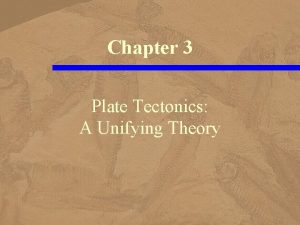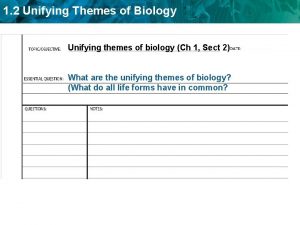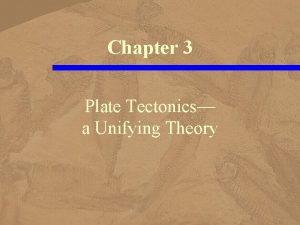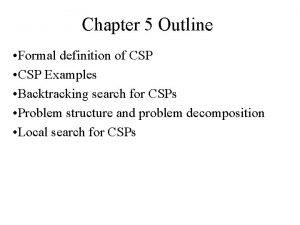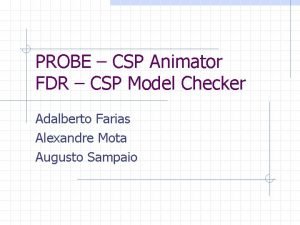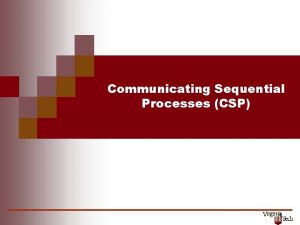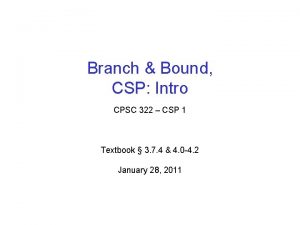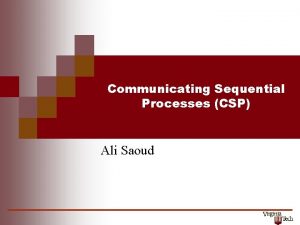Unifying Theories of Concurrency CCS and CSP He































- Slides: 31

Unifying Theories of Concurrency: CCS and CSP He Jifeng and Tony Hoare BCTCS April 6, 2006

Why? • just for the sake of it – as a scientific achievement • to explain differences between theories – and what they are good for • to integrate more general toolsets – for coherence and consistency – in system design, implementation, . . .

A Transition System • a set P of processes: • a set A of observations: – communications: – hidden events: – meaningful barbs: • a relation T a nil, p, q, Lp, … a, b, … x, y, . . . , , . . . ref(X), δ … P×A×P {(p, q) | (p, a, q) T}

a a b c b x ref(X)

Traces p=q q. p _ q. p • traces(p) {s|p • p q • p <a>s • p s r q & q a s s q _} s r

(Strong) Simulation • ≤ is the weakest x P×P such that a: A, x ; a a ; x – describes efficient model checking algorithm • ≡ ≤ ∩ ≥ Theorem: ≤ and ≡ are pre-orders – Id and ≤ ; ≤ satisfy the defining equation

Refinement ⊑ is the weakest x P×P such that s: A*, Theorem: x; ≤ s s ; U ⊑ – one defining equation implies the other Theorem: p ⊑ q iff traces(q) traces(p)

L: P→P • is a link if it maps all processes of its source theory to all processes of its target theory. • ≤L • ⊑L – i. e. , L ; ≤ ; L p ≤Lq iff Lp ≤ Lq L ; ⊑ ; L • Theorem: ≤ L , ⊑ L are preorders – L ; L = Id

L is monotonic ≤ ≤L or equivalently: – – p ≤ q ≤ ; L Lp ≤ Lq , all p, q L; ≤ consequently: – all order-theorems of source theory are valid in the target theory

L is idempotent L; L; ≤ = L; ≤ or equivalently: – L(Lp) ≡ Lp , all p consequently: – ≤L – Lp = ≡ ≤ (restricted to target theory) p iff p is in target theory

L is decreasing L ≤ or equivalently: – Lp ≤ p , for all p – ≤ L; ≤ consequently: – the target theory is more abstract – Lp is the closest abstraction of p within the target theory.

L is efficient L; ≤ = ≤L or equivalently: – Lp ≤ q iff Lp ≤ Lq , all p, q consequently: – to test : spec ≤ L imp, model-check : L(spec) ≤ imp, – (as is done in FDR)

L is a retraction iff • it is decreasing • it is idempotent • it is monotonic Theorem: iff ≤ L; L; ≤ ≤; L L is a retraction L is efficient L ; ≤ is a preorder L; ≤

quarter of the proof • L is a retraction (L ; ≤) is a preorder – Id (≤) (L ; ≤) – (L ; ≤ ; L ; ≤) (L ; ≤ ; ≤) L; ≤ {L dec} {L mon} {L idem}

Weak Simulation p =a=> q -----------Wp <a> Wq where = => and =a=> * * for a < > < > … * <a> * Theorem: W is a retraction

The original graph a b

W only adds transitions so it is decreasing W W b W a a W W

W W adds no more so it is idempotent WW b a WW WW a a WW a WW

(W; ≤ ) is weak simulation Theorem: it is the weakest solution of the defining equations –x; – x; <a> * <a> * * ; x, for a ; x • CCS/weak simulation is a retract (by W) of CCS/strong simulation

After • p/s is the most general behaviour of p after performing all of trace s p s <a> _ -----------p/s a p/(s<a>)

The original graph p a b a c

The effect of _ /a p a b p/ab a c c p/ac

Trace refinement p a _ & p/a = q --------------Tp a Tq Theorem: T is a retraction and (T ; ≤ ) = ⊑

The original graph p a b p/ab a c c p/ac

The effect of T Tp a a a b T(p/a) b T(p/ab) c c T(p/ac)

CSP is a retract of CCS Theorem: (W; T) is a retraction and (W; T; ≤) is CSP trace refinement Conclusion: CSP/trace refinement is a retract of CCS/weak simulation.

ref(X) is a refusal where X is a set of communications x X { } p x _ ----------Rp ref(X) Rp Theorem: (R ; ≤ ; R ) p x q -------Rp x Rq is ⅔ simulation

Divergences p p'' … forever ---------------------Dp δ Dr & Dp a Dr p a q -------Dp a Dq Theorem: D is a retraction

CSP/FDR = L(CCS /≤) • where L = D ; R ; W ; T is a retraction – with respect to ≤D; R • L is defined by SOS transition rules. • CSP healthiness conditions are expressed p ≡ L(p) • CSP refinement coincides with simulation • variations of CSP and CCS defined by selection from: T, D, R, W, …

CCS • is more general – applies to all edge-labelled graphs • has less laws – the minimum reasonable set • is less expressive – uses equivalence rather than ordering

CSP • describes distributed computing – graphs restricted by healthiness conditions • has more laws – for optimisation and reasoning – the maximum reasonable set respecting deadlock and divergence • is more expressive – ordering represents correctness – and refinement of system from specification
 Unifying concepts of animal structure and function
Unifying concepts of animal structure and function Unifying character of archegoniates
Unifying character of archegoniates 5 themes of biology
5 themes of biology The biological hierarchy
The biological hierarchy A unifying review of linear gaussian models
A unifying review of linear gaussian models Types of plate boundaries
Types of plate boundaries 5 unifying themes of biology
5 unifying themes of biology What are the unifying themes in biology
What are the unifying themes in biology Unifying theme definition
Unifying theme definition Oracle healthcare data model
Oracle healthcare data model 5 unifying themes of biology
5 unifying themes of biology Zhiting hu
Zhiting hu Skala lawtona interpretacja
Skala lawtona interpretacja Ccs(cca) rules 1965
Ccs(cca) rules 1965 Ccs angor
Ccs angor Skala ccs
Skala ccs Archer ccs
Archer ccs Ccs måleregler
Ccs måleregler Air cargo booking software
Air cargo booking software Ccs milwaukee
Ccs milwaukee Ccs insurance services
Ccs insurance services Ccs programlama
Ccs programlama Santander123
Santander123 Ccsweb
Ccsweb Ccs
Ccs Ccs flatness measurement
Ccs flatness measurement Ccs c derleyicisi
Ccs c derleyicisi Welcome to ccs
Welcome to ccs Ccs 800
Ccs 800 Ccs neu
Ccs neu Ccs milner
Ccs milner Powerschool ccs
Powerschool ccs
